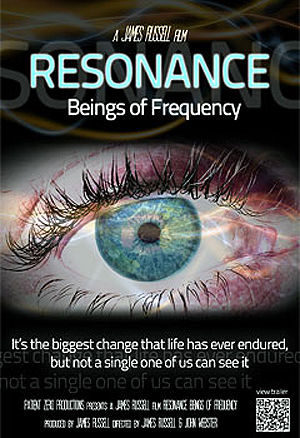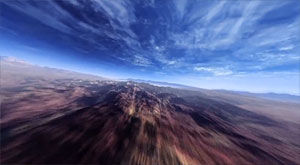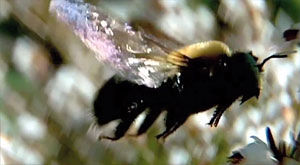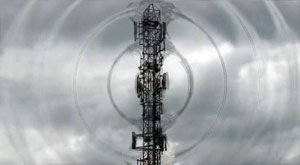"The only good is knowledge, and the only evil is ignorance." ~ HerodotusThe London Underground can be a place of happiness only in one regard - if you're fed up with inane mobile phone chatter. Despite everything I dread about the Tube, there's been a kind of silence on the trains you'd hardly experience anywhere else anymore. However, things are about to change. The major mobile phone companies are eager to equip tunnels and stations with wi-fi technology so we can spend time on the phone even where no signal could reach before. In a way, the network is about to be turned into a giant microwave.
This may be an extremely negative view on a convenience Londoners seem to be waiting for, the more so as many people consider the risks of wireless technologies in general and mobile phones in particular as highly controversial, if at all. But I belong to the people who are somewhat "electrosensitive" meaning I get a headache when I use my mobile for too long, and I kind of always "know" when I'm close to a phone mast.
Given the economical impact - and obvious benefits - of mobile communications technology it's maybe no wonder the subject hasn't been explored in more critical depth. Having said this, James Russell's documentary is a remarkable attempt at popularizing an issue that's already pressing yet widely ignored.
Resonance - Beings of Frequency is surely an eye-opener but in a sense, it's much more than that. Rather than bashing the industry in the usual conspiracy-theory-type style, the film convinces with simple but revealing, and sometimes shocking, facts that haven't been put into context like this very often.
Most importantly, the way the film looks at the historical and evolutionary dimension of a relatively young technology is rather compelling - beginning with the so-called Schumann Resonance. This electromagnetic frequency is not only "the pulse of the Earth" but of life itself and its presence seems to determine the physical and mental well-being of humans, let alone its influence on the very existence of animal species.
Thankfully, the documentary steers clear of expert speak and presents otherwise "dry facts" with compassion and respect for a non-scientific audience. Apparently the filmmakers spent a lot of effort to make their findings tangible and comprehensible - not least with a narrative that very much builds on human experience and avoids tabloid-like sensationalism.
The correlation between the development of wireless technologies and the collapse of more and more bee colonies, for instance, is as dramatic as can be but hasn't found its way into public awareness. Seeing how bees abandon hives that were fitted with Deck phones is disturbing enough, knowing what it could mean to the global food supply if high-powered phone masts should dominate our landscapes should trigger serious thought.
According to research the film presents, four species of American bees decreased in numbers by 98%, and also the navigational sense of birds and butterflies depends on Earth's natural frequency and magnetic field. Whether or not proven with certainty, the fact that 190 bird species face imminent extinction could be caused "by man-made frequencies".
Ultimately, the "could" should be enough cause for concern and this is the argument the film makes - the proliferation of a technology whose impact and consequences, after all, haven't been researched with the rigor they deserve. However, there seems to be sufficient scientific research suggesting the problem is much more serious than we think, and possibly ignored - not only by people with vested interests.
Though Resonance explores the commercial and political cobwebs woven by a profit-driven industry, the documentary sticks with the human story. There's a small English village with 18 houses and one phone mast which seems to have turned into a cancer cluster, radiation limits set against the skulls of soldiers whereas more and more young children are using mobile phones, or the phenomenon of "electrosensitivity" which meanwhile affects about 3% of the population, according to the World Health Organisation.
However, the documentary doesn't stop there. It literally goes to the "heart" of the problem - the simple fact that we can't see the artificial frequencies we're immersed in. They can be made audible though and the "live" experiments conducted in the film speak for themselves.
The conclusions the documentary makes are evocative and thought-provoking. In the end, our "connection" with the natural frequencies of Earth we - and all life - depend on seems to be damaged in ways we're yet to understand, if not to recognize in the first place. In this sense, Resonance is far from scaremongering but nothing short of a wake-up call.
Last but not least, there's a spiritual dimension to the subject the film alludes to but unfortunately doesn't explore further. There's a direct correlation between the Schumann Resonance and a specific frequency of the human brain - the Alpha waves - so it's more than likely artificial frequencies would also affect our ways of thinking and dreaming and this, beyond all medical risks, might turn out to have even more alarming repercussions as it concerns consciousness itself.








I tried to discuss and network with others on the forum but I was banned! I was severely traumatised.. It's all very interesting and this article has made me revisit that idea that had such a great impression on me.